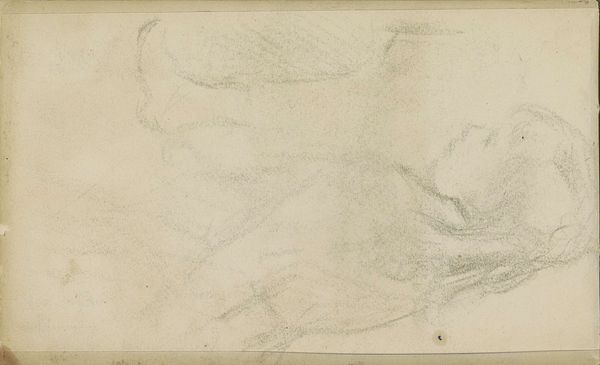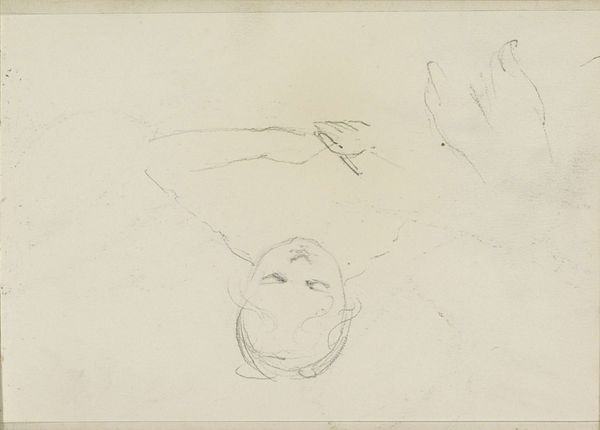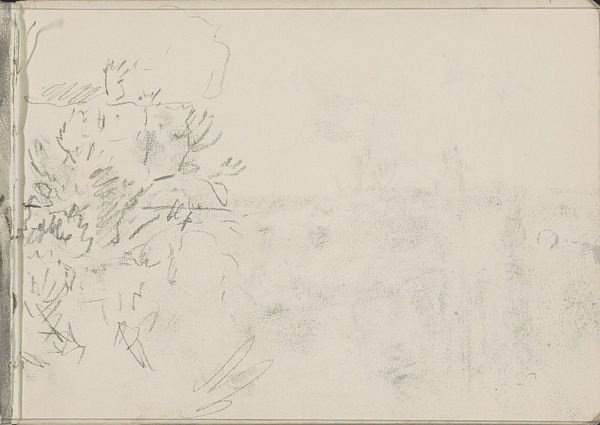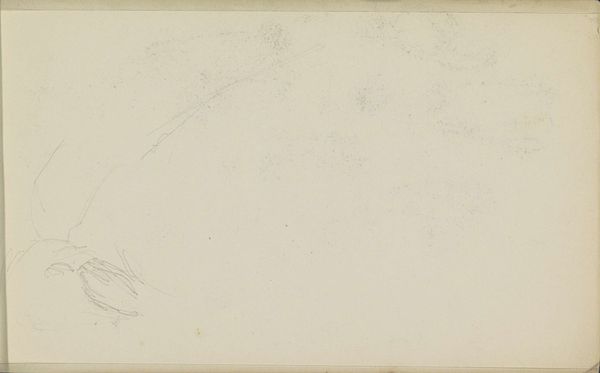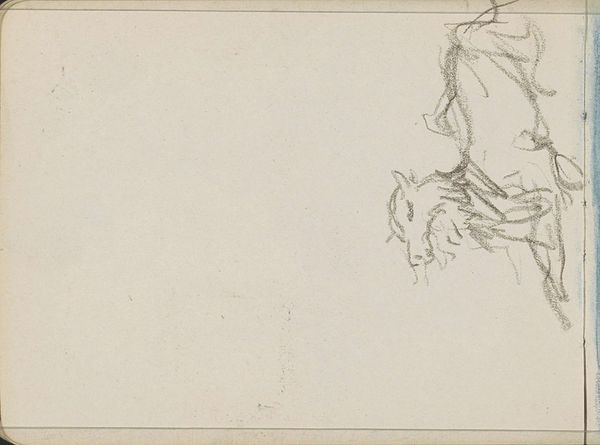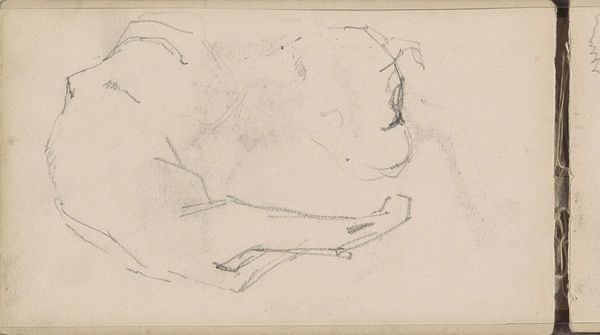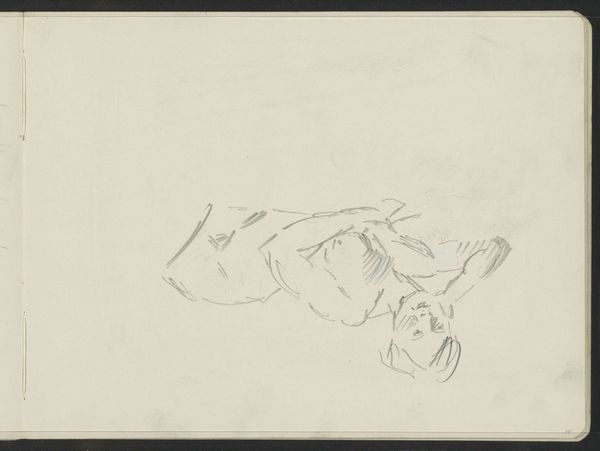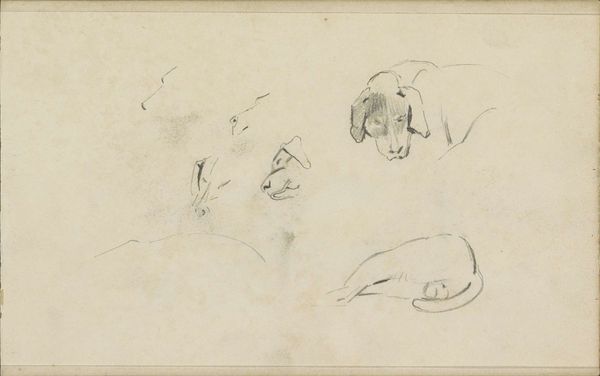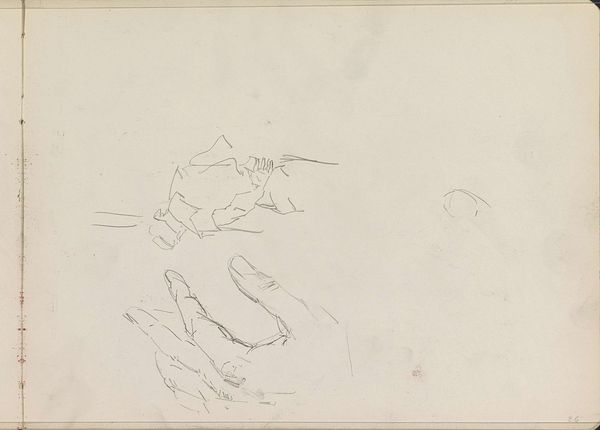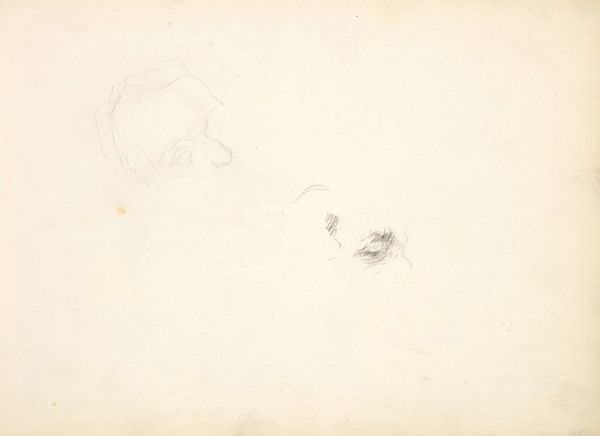
drawing, paper, pencil, graphite
#
pencil drawn
#
drawing
#
paper
#
sketch
#
pencil
#
graphite
Copyright: Rijks Museum: Open Domain
Curator: Well, here we have a sketch, created sometime between 1890 and 1920 by Isaac Israels. The work, whose title translates to "Offset of the chalk drawing on page 8 recto," is rendered in pencil and graphite on paper, and currently resides in the Rijksmuseum's collection. Editor: There's a ghostly quality to this image, almost ephemeral. The lines are so faint, the forms barely emerge from the paper. I’m curious about this sense of lightness, as though it were captured from a dream. Curator: What you’re observing, that “ghostly quality,” is inherent to the technique. An "Abklatsch," an offset print, as in this case, involves taking a print from a drawing, retaining a vestigial presence of the original. This reproduction makes us consider questions about authorship and how that may contribute to how we interpret it. Editor: So it's a copy of a copy, in a sense? That echoes something, though faintly, like cultural memories becoming obscured. It makes me wonder what was on the original drawing. The shadowy, curving lines at the bottom almost seem to hint at figures... horses perhaps? Curator: Likely studies for a more comprehensive work, certainly. It also evokes the dynamic atmosphere of Israels' social context; turn-of-the-century Amsterdam was experiencing rapid growth and industrialization. He’s celebrated for portraying everyday life. Could this speak to impressions he gained while strolling in parks or on the job himself? Editor: Yes, this aligns to the iconography of urban life. Looking at it through that lens, the wisps could symbolize fleeting moments, a recognition of modernity’s temporality that could have weighed heavy on turn-of-the-century culture. I mean, you feel the rapid industrialization yourself. Curator: That's certainly a strong and sensitive reading of a seemingly slight piece, one that enriches my own interpretation greatly. It emphasizes that even preparatory or reproductive works can reveal complex cultural nuances. Editor: And for me, understanding its method adds another layer. Thank you. It reminds us of the tangible distance between creation and a received image.
Comments
No comments
Be the first to comment and join the conversation on the ultimate creative platform.


